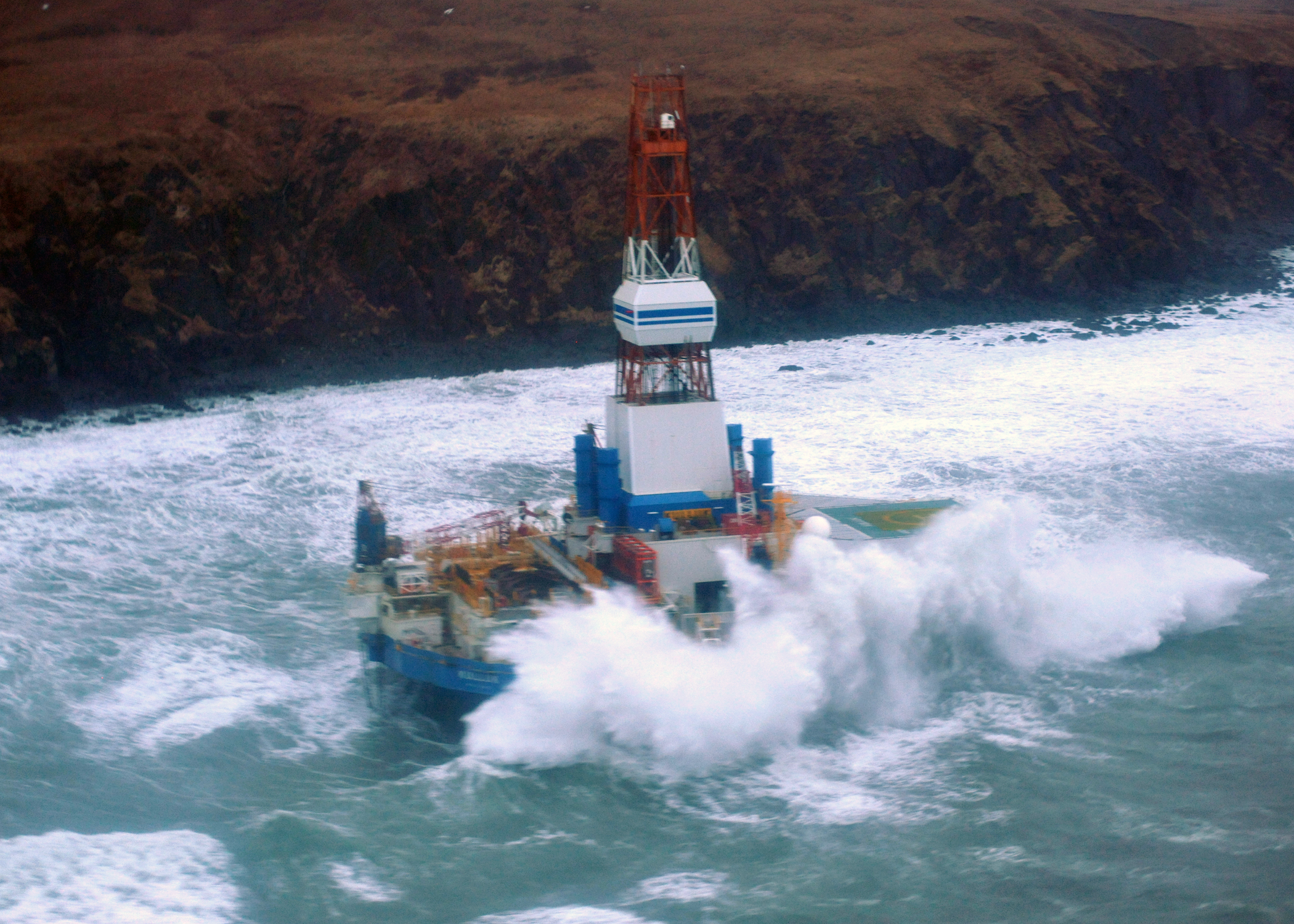- Blog
- Sustainable Economic Systems
- Updated: Shell Arctic drilling rig runs aground in Alaska
Updated: Shell Arctic drilling rig runs aground in Alaska

Donate Now!
Your contribution will benefit Friends of the Earth.
Stay Informed
Thanks for your interest in Friends of the Earth. You can find information about us and get in touch the following ways:
Update: As of late in the evening of January 6th, the Kulluk has been attached to a tow line and pulled away from the shore of Sitkalidak Island, where it had previously been grounded. The salvage efforts were aided in part by a late high tide and improved weather conditions. Salvage crews have not found any sign of fuel leak, but waves did cause water damage to some of the rig’s interior.
In addition, the Alaska Dispatch reports that Shell had originally rushed the Kulluk through dangerous weather in an attempt to avoid paying millions in state taxes to Alaska, which it would have owed the state if the rig had remained in Alaskan waters through January 1. By risking hazardous conditions to save money, Shell showed a blatant disregard for the safety of the Kulluk crew members and the Alaskan environment.
—————————-
In another blow against its dangerous bet to drill for oil in the Alaskan Arctic, one of Shell’s two oil rigs, the Kulluk, has run ashore on a small island south of Kodiak, Alaska. The Coast Guard is now in the process of attempting to salvage the 226-foot rig, which broke free from its tow lines last week and was abandoned in the course of events that left it grounded on an island 60 miles southwest of Kodiak. The Kulluk is carrying 143,000 gallons of diesel fuel and 12,000 gallons of lube oil and hydraulic fluid, and for the moment the ship is in relatively stable condition and has not spilled any of its contents.
The grounding is the ultimate outcome of multiple accidents and severe weather, which have, over the past several days, plagued the oil rig as it was being moved to Seattle for the winter. The weather has continued to impede recovery efforts.
- Last week the Kulluk began its trek from Dutch Harbor in the Aleutian Islands to Seattle. Shell’s tug Aiviq was towing it, as the drilling rig has no means of moving itself independently.
- On Thursday, the tow line connecting the Aiviq and the Kulluk failed, and the tug was forced to stop and reconnect. Later, its engines gave out, stranding both ships.
- The Coast Guard then sent the cutter Alex Haley to take over in towing the Kulluk, but storm-induced 35- to 40-foot waves caused the lines to disconnect yet again. The Haley was forced to return to the Coast Guard station at Kodiak for repairs.
- On Sunday the Coast Guard evacuated the 18-person crew of the Kulluk by helicopter.
- By Monday morning, a second tug — the Alert — had been dispatched to assist in the emergency and was connected to the drill rig. The Aiviq later finished repairs on its engine and was able to briefly establish an additional tow line to the Kulluk before the connection failed again.
- Despite the Alert’s plan to tow the rig to harbor on Kodiak Island, increasingly severe storm conditions forced it to disconnect on Monday evening. Later that night, the Kulluk had drifted to shore.
The Coast Guard’s efforts to save the Kulluk mark the end of a troubled year of dangerous Arctic drilling for Shell. While drilling test wells in the Chukchi Sea above the Arctic Circle last summer, the company was forced to delay its plans for oil extraction after problems with encroaching sea ice, a drifting incident with its other drilling rig and several accidents. In addition, Shell’s other Arctic drilling ship, the Noble Discoverer, was forced to remain in Seward, Alaska, last week, so that the Coast Guard could investigate problems with its pollution control and safety equipment.
Fortunately, in the case of the Kulluk’s grounding, the area involved is close to Base Support Unit Kodiak, a large Coast Guard base in Kodiak. But in the Bering and Chukchi Seas, where Shell still plans to move ahead with oil drilling this year, help is 1,000 miles away with no support in the inevitable cases of severe weather or accidents. Shell continues to struggle with the safety measures needed to prevent and contain an oil spill in these pristine ocean waters, and this latest incident is an escalated demonstration of that trend.
The Arctic proves again and again that it is far from a safe place for offshore oil drilling. The environment and the American people can’t afford to pay the price for another offshore oil spill, much less one in the unforgiving waters of the Arctic.
Photo by Petty Officer 3rd Class Jonathan Klingenberg/U.S. Coast Guard, via Kulluk Response Unified Command
